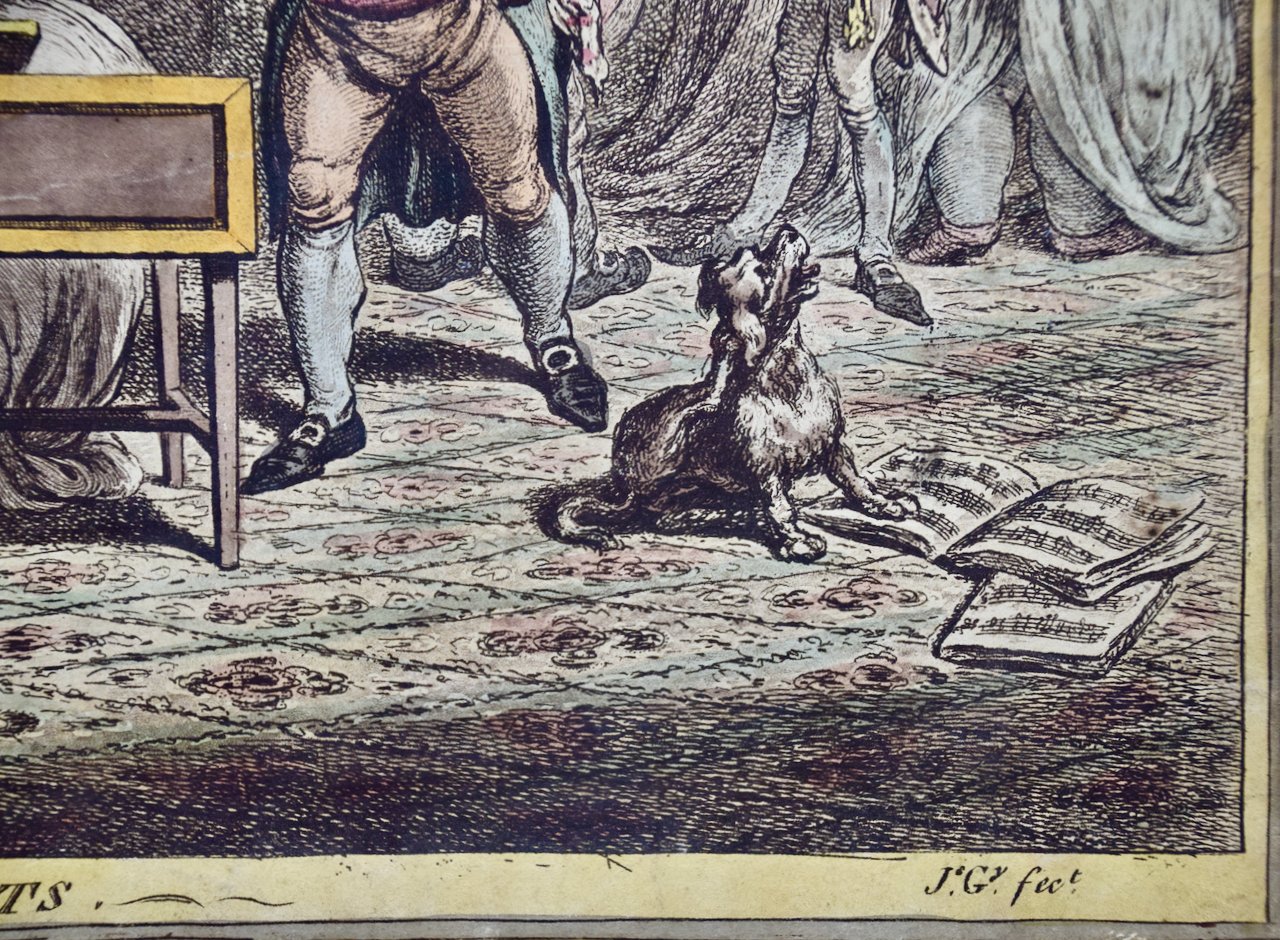"Une Partie de Campagne": 19th Century Honore Daumier Caricature
This is a 19th century Honore Daumier lithographic caricature/satire entitled "Une Partie de Campagne" (Part of the Campaign), plate 59 from the series "Moeurs Conjugales" (Conjugal Customs) in Le Charivari, published in Paris by Aubert et Cie in 1842.
Creator: Honoré Daumier (1808 - 1879, French)
Creation Year: 1842
Dimensions: Height: 20 in (50.8 cm) Width: 16.25 in (41.28 cm) Depth: 0.63 in (1.61 cm)
Medium: Lithograph
Condition: See description below.
This is a 19th century Honore Daumier lithographic caricature/satire entitled "Une Partie de Campagne" (Part of the Campaign), plate 59 from the series "Moeurs Conjugales" (Conjugal Customs) in Le Charivari, published in Paris by Aubert et Cie in 1842.
Creator: Honoré Daumier (1808 - 1879, French)
Creation Year: 1842
Dimensions: Height: 20 in (50.8 cm) Width: 16.25 in (41.28 cm) Depth: 0.63 in (1.61 cm)
Medium: Lithograph
Condition: See description below.
This is a 19th century Honore Daumier lithographic caricature/satire entitled "Une Partie de Campagne" (Part of the Campaign), plate 59 from the series "Moeurs Conjugales" (Conjugal Customs) in Le Charivari, published in Paris by Aubert et Cie in 1842.
Creator: Honoré Daumier (1808 - 1879, French)
Creation Year: 1842
Dimensions: Height: 20 in (50.8 cm) Width: 16.25 in (41.28 cm) Depth: 0.63 in (1.61 cm)
Medium: Lithograph
Condition: See description below.
Artist: Born in Marseille, Honoré Daumier moved to Paris at the age of eight. During his forty-year career, he produced over 4,000 lithographic caricatures and hundreds of small oil paintings, a body of work which endures today as one of the greatest bodies of satirical art ever produced. In 1832, he was convicted and jailed for insulting the King in a print called Gargantua, which depicted King Louis Phillippe on a giant chamber pot excreting political favors. From then on Daumier generally avoided political topics and used the middle class city-dwellers of Paris as his subjects. His prints appeared regularly in several Parisian satirical journals, the most famous being Le Charivari. Daumier targeted the expanding class of French bourgeoisie and their pretensions to gentility, intellectualism and wealth. He used compassion and gentle humor to reveal ironies and satire. The closest he ever came to political satire after his imprisonment was a series of thirty-nine prints depicting legal proceedings, lawyers and judges, entitled Men of Justice (1845-48). These works, among his best known, are decidedly stronger in the criticism of their subjects. His other subjects include comedic theatre, charlatans of every variety, artists and collectors, Parisian women and the newly emerging railway. Daumier enjoyed great popularity during his life, but never managed to achieve financial success. Publications Publishing Daumier's work: Le Charivari; La Silhouette; La Caricature; La Caricature Provisoire; Le Boulevard; La Revue Comique; Le Petit Journal Pour Rire; Le Journal Amusant; La Presse; Le Monde Illustre





















































